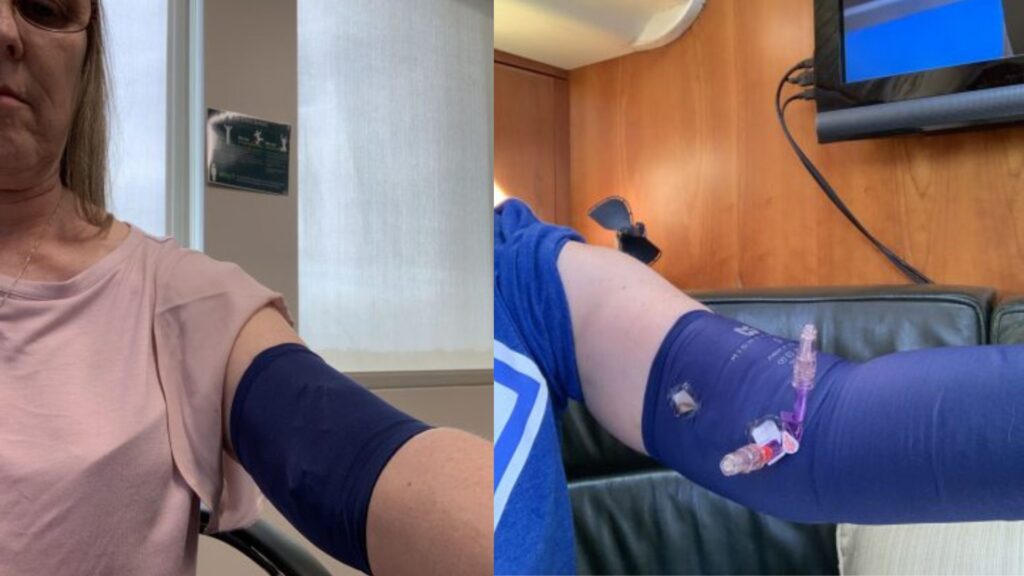On November 30, 2018, Sydney Liles was diagnosed with Mediastinal Large B-cell Lymphoma. Now, she tells her story of experiencing cancer with a PICC line. “You know how life is going along and everything is good, really good.” Sydney writes in her blog, “You have a great job, live on your boat, you’re empty nesters, and everything seems to be falling into place. Then…PLOT TWIST!”
This is a moment many of us are familiar with. That moment when a doctor gives you a diagnosis that will change your life.
Since her diagnosis, Sydney has committed to documenting every part of her cancer journey, the good and the bad. Earlier this year, Sydney experienced a new plot twist – getting a PICC Line placed. Read on to learn more about Sydney’s PICC Line journey, and about the ways she navigated this next chapter in her journey!
What is having a PICC line like?
It is like having a large bit of hardware stuck on and in you. It really doesn’t hurt but it is a little irritating. [The PICC line] has to be kept dry. You have to be careful not to snag the access ports (I have 2) on anything. You should not push on it (like if you are sleeping on your side). And I have to have the dressing professional changed once a week (they even sign and date their work).
The upside is that instead of sticking me with needles for blood tests (something I get to do very frequently now) and hooking me up with IV infusions (also a regular occurrence) they just use the access ports.
Another advantage is that the PICC line protects my veins from the chemo drugs which are apparently quite nasty.
What are the challenges? What are some solutions (they didn’t tell you about)?
Challenges
I am pretty sure that the doctors and nurses involved in caring for people with PICC lines have never had one themselves.
I asked about how to take care of the PICC line. [In response], I was told I have to keep it dry. I ask how do I take a shower. With a fair amount of enthusiasm, I am told to wrap my arm with saran wrap and [that] the stick-on press and seal is supposed to work well too. Um….really? A nurse [practitioner] pointed me to better alternatives but didn’t have specific suggestions.
The second challenge was protecting the PICC line and access ports during the day and night so I didn’t snag them on anything. The surgery nurse gave me a gauze tube. When I looked sad at it the nurse in recovery told me I could cut up an old tube sock for a cover. The phlebotomists and the infusion center nurses told me the same thing.
I want everyone to think about this. [Currently], I am very ill and not feeling good. I am going to be like this for at least the next 6 months. I now have a significant bit of hardware attached to me full-time to remind [me] of just how sick I am and how lousy I feel. And the professionals taking care of me are recommending I cover it with an old cut-up sock. How does that make you feel? Not good. Seriously…offer better options.
Solutions
I did some research. There are a lot of much better options. After looking at all the options, I settled on the PICCPerfect® PICC Line Cover. These are made by people who have or have had PICC lines, and they are perfect. They are snug but not tight. [The PICCPerfect® PICC Line Covers] have special slits for the access ports to slide through so you can keep the access ports off your skin (that is more irritating than you would imagine). They are infused with silver, so they are anti-microbial. And they are not ugly or cludgy. I bought 3 in different colors and patterns.

The story above was originally published on Sydney’s blog. You can read her full post and tune in to the rest of her health journey here. Thank you, Sydney, for sharing your story with us! We are proud to support you as our Friend in the Fight!

